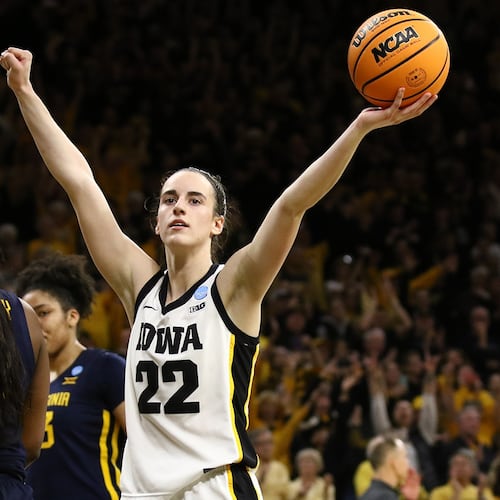Once upon a time, whispered tales of improper benefits involved $50 handshakes. A booster would shake a college athlete’s hand and share more than warm greetings. The All-American Hugh McElhenny, who played at Washington 70 years ago, offered a variation: “A wealthy guy puts money under my pillow every time I score a touchdown. I can’t afford to graduate.”
McElhenny’s line is cited by Justice Neil Gorsuch in the unanimous June 2021 Supreme Court decision – NCAA v. Alston et al – that changed college sports. Lead plaintiff Shawn Alston, a little-remembered running back for West Virginia, is now to collegians as Curt Flood was to MLB players. Flood’s case opened the gates for free agency. Alston’s case made NIL money the currency of collegiate sports.
In upholding the 2014 O’Bannon v. NCAA decision, the Supremes ruled the NCAA could affix no limit to NIL money. For the rights to his/her name/image/likeness, an athlete can earn whatever the market will bear. Who’d have guessed that the market would bear so much so soon?
(Only everybody. But we digress.)
Last summer, Alabama coach Nick Saban spoke of Bryce Young and NIL money: “Our QB is approaching ungodly numbers, and he hasn’t even played yet.” Saban reported that, as a sophomore, Young would earn “almost seven figures.” Having won the Heisman Trophy, how much might Young make in 2022? As much as Saban?
The website On3.com estimates Stetson Bennett enhanced his NIL profile by $317K over the past five weeks, in which he led Georgia to its first national championship in 41 years. In the aftermath, Bennett took to social media to extol the joys of a Great Clips haircut and the chicken at Raising Cane. Those wondering why he has opted to play a sixth collegiate season are advised to reread McElenny’s quote.
Difference is, banking NIL money isn’t an NCAA violation. Texas A&M coach Jimbo Fisher said in December on Paul Finebaum’s show: “There’s always been NIL stuff going on – it just wasn’t legal.”
The second of this season’s signing days was Wednesday. It ended with Texas A&M, which finished 4-4 in SEC play, having assembled the nation’s No. 1 class. Alabama and Georgia, which met in both the SEC and national championship games, were second and third.
Lane Kiffin, the imp who coaches Ole Miss, told ESPN’s Mark Schlabach: “I joked the other day that I didn’t know if Texas A&M would incur a luxury tax in how much they paid for their signing class.”
This prompted the chatty Jimbo to deliver a signing-day soliloquy, referring to “coaches in our league” as “clown acts.” Then: “The guys griping about NIL and transfer portal are using it the most and bragging about it the most. … It’s a joke.”
Then: “I know how some of those guys recruit, too. Go dig into that. I know the history. I know the tradition. I know things. Trust me, you don’t want to go down that avenue.”
Unlike many of Jimbo’s utterings, these weren’t ad-libbed. He referred to notes. He mentioned sliced bread, which might have led observers to wonder if he was consulting his grocery list. Nope. A Jan. 4 article on BroBible referenced a message board post by “Sliced Bread” – we’re through the looking glass now – that claimed A&M boosters had pooled “between $25 and $30″ million in NIL money for this ballyhooed class.
Because nothing in sports is complete without a Saban proclamation, the greatest-ever coach spoke at the Senior Bowl in Mobile. His gist: We at Alabama don’t use NIL money to recruit. Said Saban: “I hear these crazy people on TV who say now you’re doing it above board. We never did it. We never cheated to get a player. We never paid players to come to our school. And now that’s actually happening. People are making deals with high school players to go to their school.”
The NCAA’s policy on NILs: “Individuals can engage in NIL activities that are consistent with the law of the state where the school is located.” A college coach cannot promise any recruit an NIL deal – that’d be a violation – but recruits are free to notice how many players in a program have made such deals and, ahem, go from there.
Bottom line: A collegiate athlete can take NIL money and remain an amateur. That NIL money would become a lure leaves us as shocked as Capt. Louis was in “Casablanca” by the presence of gambling in his city. Which is to say, not shocked at all.
About the Author
The Latest
Featured

